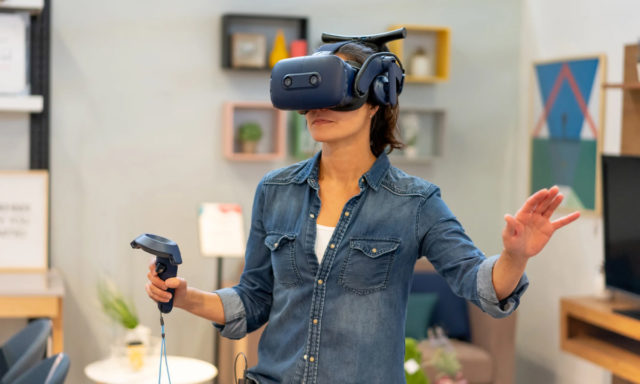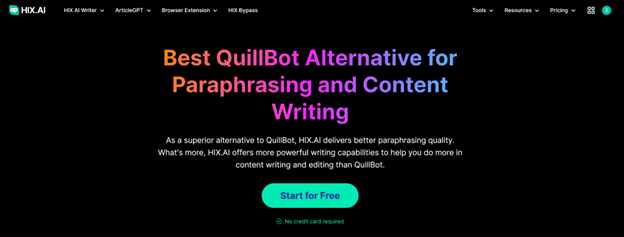Let’s start this blog with a one-liner. “The future of augmented reality (AR) and virtual reality (VR) in mobile app development is highly promising”.
AR and VR technologies can potentially create highly immersive and interactive user experiences. In future mobile apps, we might see companies leveraging them to overlay digital content onto the real world.
If they do, it will allow users to visualize and interact with virtual elements in their physical surroundings. Conversely, VR offers complete immersion into virtual environments, enabling users to explore and engage with 3D worlds.
With the speed at which AR and VR are revolutionizing various industries and user experiences, the time is close to when it will change how apps are developed and used. So what are those driving forces in favor of AR and VR? We’ll discuss that before that, let’s discuss some other aspects.
Table of Contents
What is Augmented Reality?
Augmented reality (AR) refers to a technology mixing the real world with computer-generated elements. It is developed to enhance a user’s perception and interaction with their surroundings.
It overlays virtual objects, information, or imagery onto the real-world environment, allowing users to experience a blended reality. The augmented elements take various forms, such as 3D models, text, videos, or interactive graphics. They are seamlessly integrated into the user’s real-world view, appearing as if they exist in the same physical space.
What is Virtual Reality?
Virtual reality (VR) is a simulated, computer-generated environment that immerses users in a completely artificial or virtual world. Unlike augmented reality, VR aims to create a fully immersive experience that replaces the user’s perception of reality.
It typically involves using a head-mounted display (HMD) or goggles that cover entirely the user’s field of view. It is expected that its usage will increase in future apps as technology evolves.
Sectors Having High Potential For AR/VR Powered Mobile Apps
Gaming and Entertainment
AR and VR have already made significant advancements in the gaming and entertainment industry. In the future, mobile apps will offer more sophisticated and immersive gaming experiences. The boundaries between the virtual and real worlds will become blurry.
As more and more app development companies started preferring AR and VR, Users can expect highly realistic graphics, interactive gameplay, and social interactions within AR and VR environments.
Education and Training
AR and VR have immense potential in education and training. Mobile apps can deliver immersive educational content, allowing students to visualize complex concepts, explore historical sites, or engage in virtual science experiments.
Similarly, VR can provide realistic training simulations for industries like healthcare, aviation, and manufacturing. It will enhance learning outcomes and skill development.
E-commerce and Retail
AR have already transformed the way users shop online and you must have noticed that. By allowing users to try on virtual clothes, visualize furniture in their homes, or preview products before making a purchase, AR has proved its worthiness in the segment.
The future mobile apps will integrate more advanced AR features, such as spatial mapping and object recognition, to provide even more realistic and personalized shopping experiences.
Real Estate and Architecture
Mobile apps are helping users to view virtual property tours. Users can visualize architectural designs in real-world contexts, or make informed decisions about remodeling projects.
This technology provides clients and professionals with a better understanding of space, layout, and design elements.
Social and Communication
Experts are in the opinion that AR and VR reshape social media and communication platforms. Have you heard about the Metaverse? This is a new concept where users can connect and interact in virtual environments.
Here, the mobile app company will use AR filters and effects to enhance video calls and messaging experiences, adding fun and engaging elements to everyday communication.
Healthcare and Wellness
AR and VR have significant potential in healthcare and wellness applications. Mobile apps offer immersive experiences for pain management, mental health therapies, or rehabilitation exercises. AR are assisting medical professionals in visualizing patient data during surgeries, enhancing precision and safety.
Conclusion
As technology advances and AR/VR devices become more accessible, mobile app development companies will continue to explore innovative ways to incorporate these technologies into various domains.
The future holds tremendous possibilities for AR and VR in mobile app development, shaping the way we interact with digital content and transforming industries across the board.



![Best Free Mobile Remote Desktop App [iOS & Android] Free Mobile Remote Desktop App](https://techniciansnow.com/wp-content/uploads/2024/01/Free-Mobile-Remote-Desktop-App.jpg)




